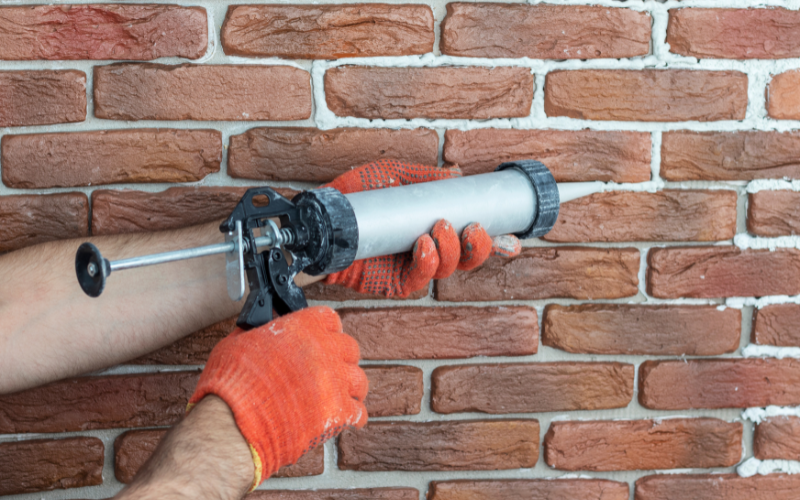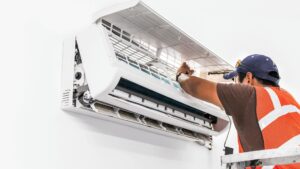A tried-and-true method for dealing with water intrusion in both residential and commercial buildings is injection waterproofing. This technique efficiently seals and reinforces the structure by injecting specific materials into joints, fissures, or porous substrates.
Learn the main advantages of injection waterproofing and discover how it performs better than conventional waterproofing methods.
The Benefits of Injection Waterproofing for Residential and Commercial Projects
1. Versatile Application
Injection waterproofing is highly adaptable, making it suitable for various structural elements:
- Foundations: Prevents water seepage and strengthens underground structures.
- Basement Walls: Seals cracks and reduces dampness.
- Concrete Floors: Addresses minor cracks and prevents water damage.
- Tunnels and Retaining Walls: Offers robust waterproofing in high-pressure environments.
This flexibility ensures that residential and commercial properties benefit from targeted and efficient waterproofing solutions.
2. High-Performance Injection Materials
The effectiveness of injection waterproofing lies in the quality of the injection material used. Common materials include:
- Polyurethane Foam: Expands upon contact with water, filling voids and cracks.
- Epoxy Resin: Ideal for structural repairs due to its strength and durability.
- Acrylic Gel: Suitable for fine cracks and provides a long-lasting waterproofing barrier.
These materials are engineered to bond with the substrate, creating a watertight seal that remains effective for years.
3. Long-Lasting Protection
Injection waterproofing provides longer-lasting results than traditional waterproofing methods like membrane application. The injected material penetrates deep into the structure, sealing cracks and preventing water infiltration. This characteristic ensures durability and reduces the need for frequent maintenance or repairs.
4. Cost-Effective Solution
Injection waterproofing is more economical than large-scale structural repairs or replacements. Here’s why:
- Targeted Application: Repairs are made directly at the source of the issue, minimising wasted materials.
- Reduced Labour Costs: The process is quick and requires fewer resources than traditional methods.
- Prevents Future Damage: Proactive waterproofing saves on costly repairs in the long run.
This approach offers significant savings for property owners and managers without compromising quality.
5. Minimal Disruption
Unlike other waterproofing techniques, injection waterproofing requires minimal disruption to daily operations. The procedure is:
- Non-Invasive: There’s no need to excavate or remove existing structures.
- Fast: Repairs can often be completed in a single day due to the efficient injection materials.
- Clean: The process generates little to no debris, making it ideal for occupied buildings.
This characteristic is particularly advantageous for commercial properties where downtime can result in revenue loss.
6. Enhanced Structural Integrity
Injection waterproofing does more than prevent water ingress; it also reinforces the structure. Materials like epoxy resin and polyurethane seal cracks and bond the structure, improving its overall strength. This dual benefit makes injection waterproofing a smart choice for ageing buildings or those exposed to extreme environmental conditions.
7. Environmentally Friendly Options
Many injection materials are eco-friendly and safe for residential and commercial spaces. For example:
- Low-VOC Polyurethanes: Reduce environmental impact while delivering excellent waterproofing.
- Non-Toxic Acrylic Gels: Safe for use in areas with water supply systems.
Environmentally conscious property owners can benefit from these sustainable waterproofing solutions without compromising performance.
Why Choose Injection Waterproofing Over Traditional Methods?
Traditional waterproofing techniques, such as surface membranes or coatings, often fall short of providing long-term protection. Here’s a comparison:
- Penetration Depth: Injection materials penetrate deeply into the substrate, sealing cracks at their source. Membranes only provide surface-level protection.
- Durability: Membranes can degrade over time, especially when exposed to UV rays or mechanical stress. Injection materials are designed to last.
- Flexibility: Injection waterproofing can adapt to irregular surfaces and small cracks, whereas membranes require a smooth, even application.
Injection waterproofing offers a superior solution for maintaining structural integrity and preventing water damage by addressing the root cause of water ingress.
Conclusion
Injection waterproofing is a practical, long-lasting, and reasonably priced option for commercial and residential applications. It is a better option than conventional techniques due to its adaptability, high-performance materials, and capacity to improve structural integrity. Property owners may prolong the life of their structures and prevent water damage by investing in high-quality injection materials and expert applications. Whether you’re dealing with a cracked basement wall or a large-scale commercial structure, injection waterproofing is a reliable solution for long-term water ingress prevention.
Visit Adcos Asia to learn more about how we can protect your property from water damage and enhance its structural integrity.
Stay in touch to get more updates & news on Latimes.blog!







Be First to Comment